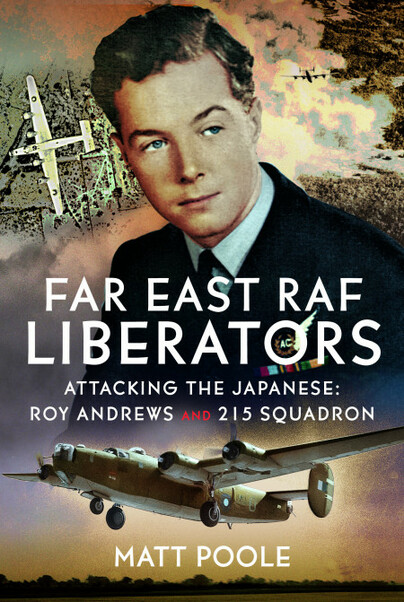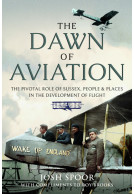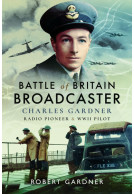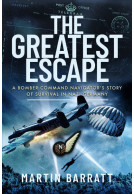Far East RAF Liberators (Hardback)
Attacking the Japanese: Roy Andrews and 215 Squadron
Imprint: Air World
Pages: 264
Illustrations: 32 mono illustrations
ISBN: 9781036131685
Published: 11th July 2025
(click here for international delivery rates)
Order within the next 6 hours, 19 minutes to get your order processed the next working day!
Need a currency converter? Check XE.com for live rates
Between 11 October 1944 and 8 April 1945, wireless operator/air gunner Roy Andrews flew thirty-five missions on Consolidated B-24 Liberators of the RAF’s 215 Squadron, operating out of Digri airfield, then Dhubalia, in Bengal, India. Some of Roy’s flight times surpassed thirteen hours per mission. One of his ops was an exercise near the India-Burma border, one was an Air-Sea Rescue mission close to the Japanese-held Burmese mainland, and thirty-three were either bombing and strafing, or just bombing, attacks against targets in Burma and Thailand. These included three sojourns (one in 1944 and two in 1945) to destinations along the infamous Thailand-Burma ‘Death’ Railway, notorious for the suffering of Allied PoWs and Asian labourers who had been forced to construct nearly 258 miles of rail line through an often inhospitable landscape.
Roy’s tenure on 215 Squadron coincided with the unit’s use of the American-built four-engine B-24 Liberator. Before he arrived, 215 Squadron flew bombing operations aboard twin-engine Wellingtons against the Japanese in Burma, and after the Liberator period it flew twin-engine Dakotas on transport duties.
Roy began his Liberator operational flying as his crew’s second wireless operator, meaning that he was then primarily responsible for manning one of the single .50-calibre beam guns. He became his crew’s first wireless operator – the main W/Op – on 13 January 1945 and flew his final twenty-five ops in this role. As an officer he was called upon to fulfil other 215 Squadron duties, such as censoring outgoing mail, preparing and distributing jungle kits before flights and collecting and inventorying unused kits after flights.
Roy’s intriguing insight into his Hong Kong and England upbringing, his pre-war evacuation from Hong Kong and relocation to the Melbourne, Australia area, his military training, and his varied wartime experiences in India, in part taken from his own words, are presented in the book. Every one of his thirty-five ops and his two longest non-operational Liberator flights are described in detail.
Historian and author Matt Poole added much information about 215 Squadron, including an analysis of Digri and Dhubalia airfields and of each 215 Squadron Liberator op not flown by Roy. Among these were three more combat flights to Thailand-Burma Railway targets and two other railway destinations near this stretch of legendary horror.
Illustrated with a collection of high-resolution photographs, including aerial bomb-strike photos from Roy’s ops and many never before printed images, this book presents a glimpse into the rarely featured episode of Far East RAF operations during the Second World War. In what is the most comprehensive summary of 215 Squadron’s B-24 Liberator activities ever attempted, all of its three longest non-operational flights (each greater than eleven hours in flying time) and seventy-seven missions aboard this iconic bomber are examined.
"...recommended to historians and general readers..."
FlyPast
With VJ Day commemorations fresh in the memory this fascinating and highly readable book recounts one airman’s war against the Japanese but also provides a detailed insight into RAF Liberator bomber operations over Burma during the last year of the war. Flt Lt Roy Andrews the subject served with 215 Squadron and through the prism of his operational service as a wireless operator/air gunner (Wop/AG) the author offers an insight into the triumphs and tragedies of the squadron that were mirrored by all of the sister units. It is thus not a dry read but one full of at times heart stopping narrative but with much detail that will please historians as will its chronological approach. It is first and foremost one man’s story and is thus all the more poignant with being read exactly 80 years after the events. This is highly recommended to both the general reader and the historian and stands as a monument to ‘one of the many.’
Andrew Thomas - Author and Historian
About Matt Poole
Author Matt Poole, a retired U.S. Government geospatial analyst residing in Silver Spring, Maryland (in the Washington, DC metropolitan area in America), has researched Second World War RAF Liberator operations in the Far East (flying out of India, Ceylon, and Burma) since 1990. At that time he began investigating the 29 February 1944 combat disappearance of his Liverpool, UK, born-and-raised mother’s first husband, George Plank, a wireless operator/air gunner on RAF 159 Squadron flying out of Digri, India (approximately 64 miles west of Calcutta – now called Kolkata). This intense research led Matt to gain expertise in the activities of numerous RAF (and, secondarily, American) flying units and to assist families of Liberator veterans in learning of the exploits and sometimes losses of their loved ones. He has located many veterans and also kin of the fallen, including siblings, cousins, children, and widows. He has also found girlfriends and fiancées. His desire has always been to share his considerable findings with those who never knew loss details (only if they wished to know). For his first book (entitled RAF LIBERATORS OVER BURMA, subtitled FLYING WITH 159 SQUADRON) he edited the memoir of RAF wireless operator/air gunner Bill Kirkness DFM, and he provided expanded details to enhance Bill's words. He has also written two articles about George Plank and Liberator losses over Burma in the RAF Association’s Air Mail magazine (PARTS 1 and 2 of a story entitled DARING DIANA, which was the name of George's Liberator bomber) and has given popular Internet podcast interviews (on WW2podcast.com and via the RAF Association).














